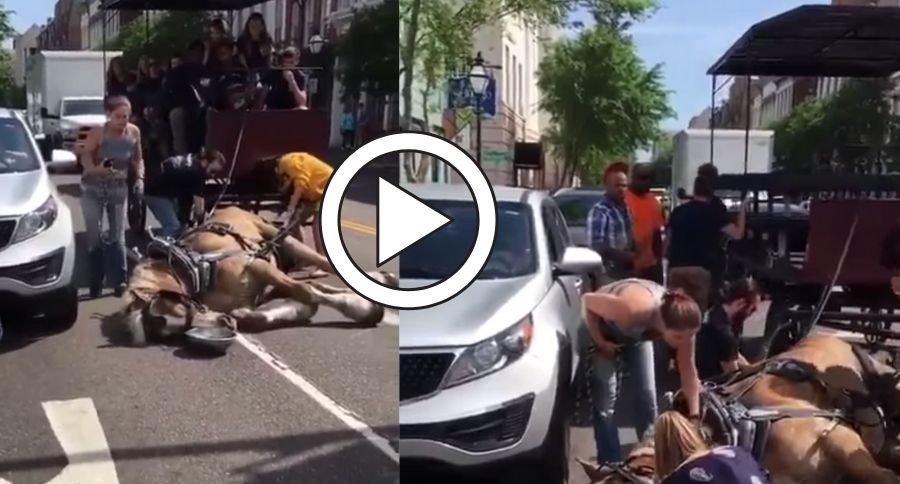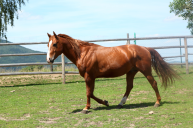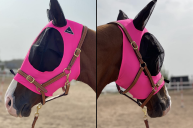This poor horse collapsed after pulling tourists in a carriage. You keep hearing someone say, "he should not be working" and she's right. This horse was clearly suffering from heatstroke.
We'll review the signs of heatstroke in horses towards the end of this post.
Let's review what this bystander saw based on her Facebook video and what we can glean from other sources.
The shocking footage shows a horse collapsed in the middle of a street in Charleston, South Carolina after pulling a heavy carriage in the heat.
The statement on the video, asks tourists to use other means of transport when visiting this city. I have to agree with her. Two people are trying to free the horse and give him water. The Charleston Fire Department is also there from the looks of the video trying to help.
According to the Scinewsreporter.com, a spokesperson from the RSPCA told UNILAD the following:
"This is a very distressing video which highlights the dangers to horses of hot weather and the importance of protecting these animals from overheating. Working horses will be particularly susceptible so owners should pay special attention to their wellbeing in hot weather and avoid subjecting them to additional stress."
Staff note: Always monitor your horse's body temperature, and heat stress to ensure the warm weather isn't causing heatstroke. A hot summer day can be brutal for horses so keep your horse cool with these tips. One of the best things you can do is continue to make sure they have clean water.
Tips from the experts
This may seem obvious but after watching this video, let's add fresh water!
- If you turn your horse out during the day, make sure that he has access to shaded areas, ideally by means of a run-in shed or stall. Being able to get out of the hot sun can help your horse to cool down.
TheHorse.com also recommends a misting system for your horse. "As moisture is absorbed from your horse's skin, it will take away some of the heat. Frequent mistings are far more effective than a single dousing with a hose."
- Horseandrider.com shares tips on a good fly mask,
- Do choose a well-made mask constructed of a nonabrasive material with soft linings wherever the mask comes in contact with your horse's face.
- Do make sure the mask fits your horse's head properly, so it can be adjusted to lie smoothly against his face. The mask's lower edge should fall at least an inch below the bottom of your horse's cheekbone; otherwise, a gap created by the cheekbone will allow easy entry to flies under your horse's jaw.
- Horses with lighter colored muzzles and light skin around their eyes are particularly at risk of being sunburned. I didn't know this but you can and should apply sunscreen, and yes it's ok to put this on your horse.
This carriage horse was clearly experiencing heatstroke and no one was paying attention until it was too late. My question is why during a heatwave would a company still have horse carriage rides.
What do you think about these tips? Share your thoughts below.
WATCH NOW: 10 Most Popular Horse Breeds in the World




